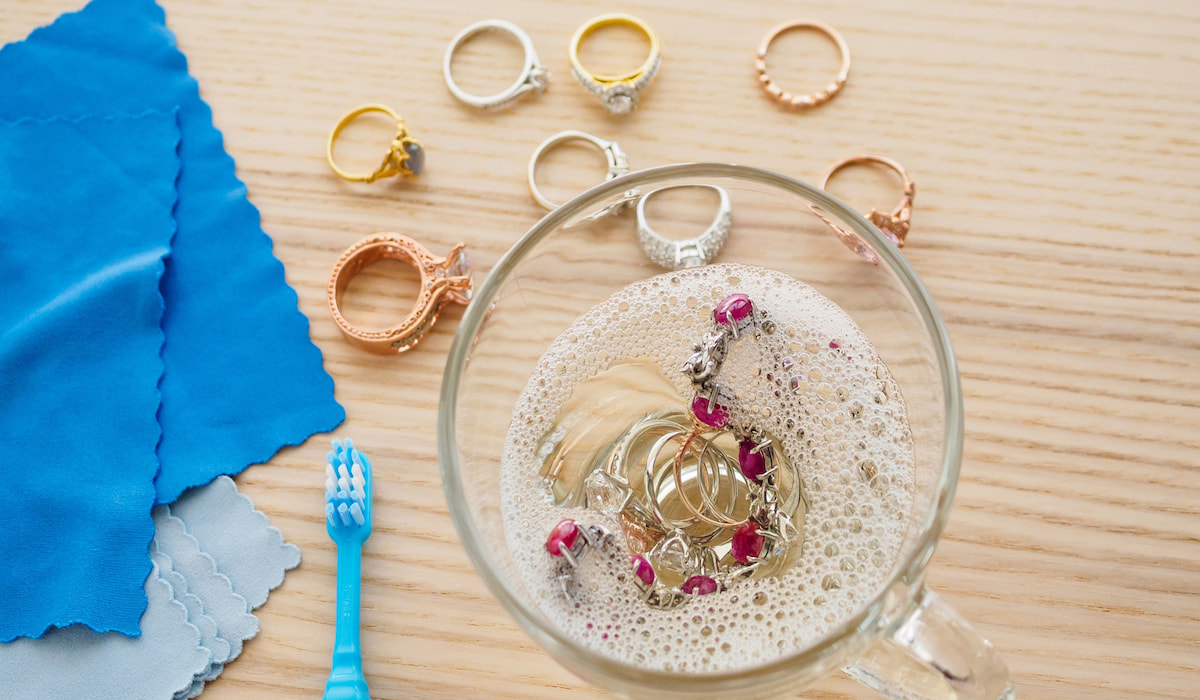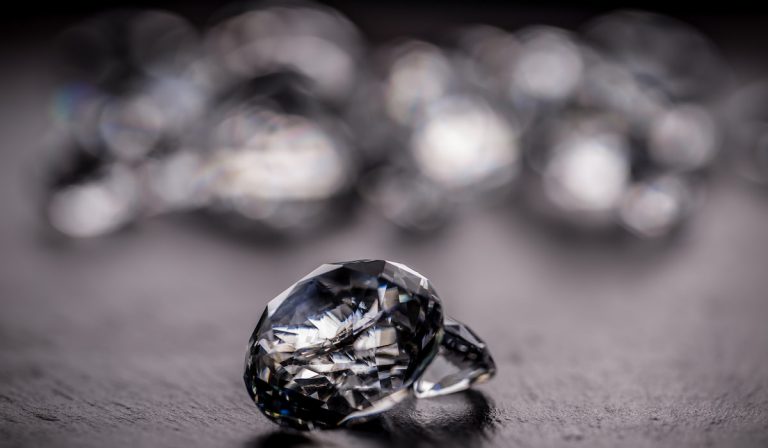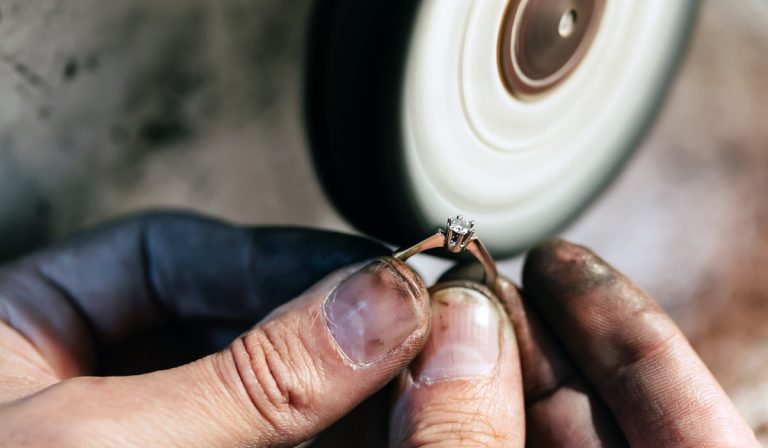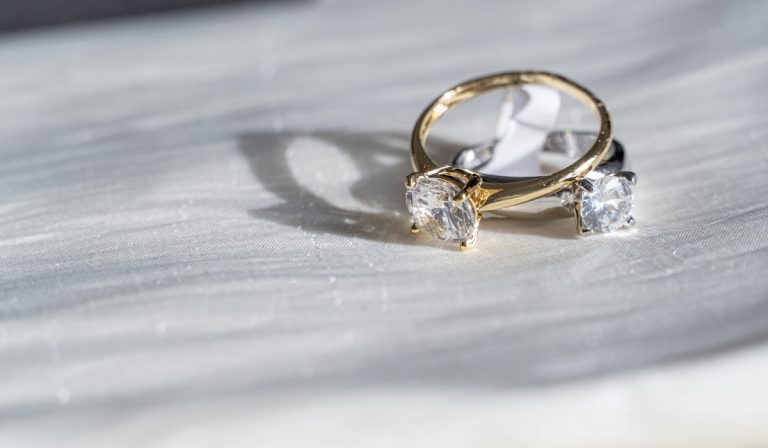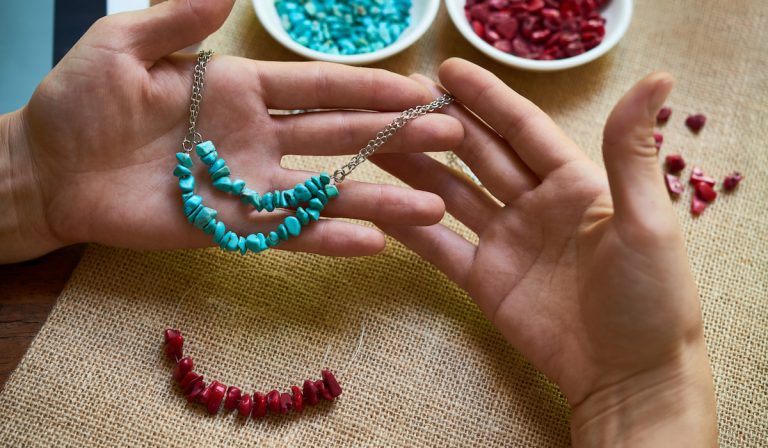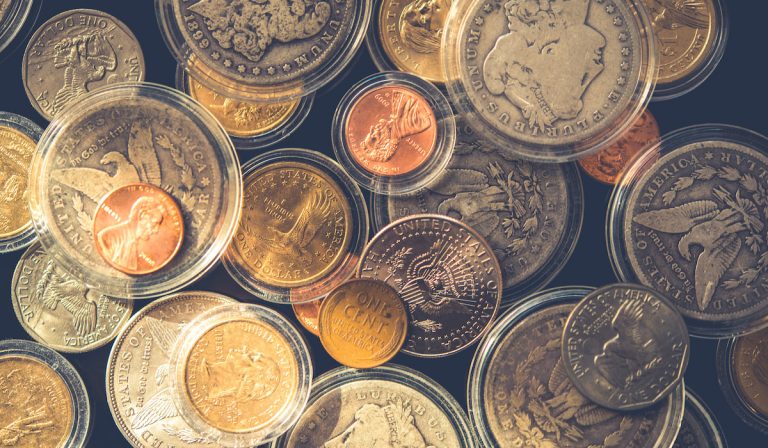Can You Clean Jewelry with Toothpaste?
Regardless of the way you take care of your jewelry, tarnish will always come about sooner or later. Tarnish is the natural result of wearing your precious metals and gemstones and exposing them to air, moisture, dirt, lotions, even skin oils.
Light tarnish or cloudiness may be removed easily with a polishing cloth or even dish soap and warm water. But sometimes intricate settings and frequently worn pieces accumulate a more tenacious tarnish. If you just want to quickly shine something up, can you use toothpaste?
Can toothpaste be safely used to clean jewelry?
It is not recommended to use toothpaste to clean your jewelry. You may have heard that toothpaste is safe to use, but that only applies in two specific instances and it still is not without significant risk. Read on to find out when you may be able to use toothpaste in a bind to clean some silver jewelry and why it is not a recommended practice.
Can You Clean Jewelry with Toothpaste?
You should not use toothpaste to clean jewelry.
Gemstones, diamonds, gold, and platinum should not be exposed to toothpaste.
However, toothpaste can be used to clean only matte-finished silver and satin finish silver but it is not recommended for regular use. Taking your precious metals and jewels to a jeweler is the best option.
Toothpaste contains minute abrasive particles that are meant to clean your teeth, and they may be harder than the metals and gems in your jewelry. Therefore, toothpaste has the capacity to do irreparable damage if it is used on the wrong items.
The Mohs hardness scale is used to measure the hardness of metals and other natural substances. It uses the numbers 1-10 to rank a material’s hardness, with 10 being the hardest and the category of diamonds, the hardest stone known.
Toothpaste has a hardness of 3 – 4 Mohs. Many gemstones have a hardness of 7 Mohs, but some such as emeralds have a softer ranking of around 5. Talc is among the softest stones at 1 Moh. Gold and silver have a hardness of 2.5 or so, while platinum is around 4.
Knowing this, you can determine that toothpaste is capable of scratching these precious metals because it is harder than they are. The abrasive materials may be effective in polishing away any tarnish, but any damage caused may be worse than the tarnish.
The toothpaste could also affect the setting, loosening it or damaging any fine details and fixtures.
Some stones should never be exposed to toothpaste, even in everyday wear because of the damaging effects they suffer.
Specifically, opals and pearls should never come in contact with toothpaste because the color and luster of these stones can be reduced or ruined.
Furthermore, toothpaste contains flavoring oils and compounds that are very corrosive to metal, especially gold.
Although some gemstones have hardness levels that are slightly higher than toothpaste making you think they could be cleaned with toothpaste, it still is not safe. Therefore, the best way to clean your jewelry is by sticking to verified jewelry cleaning compounds specific to your jewel piece.
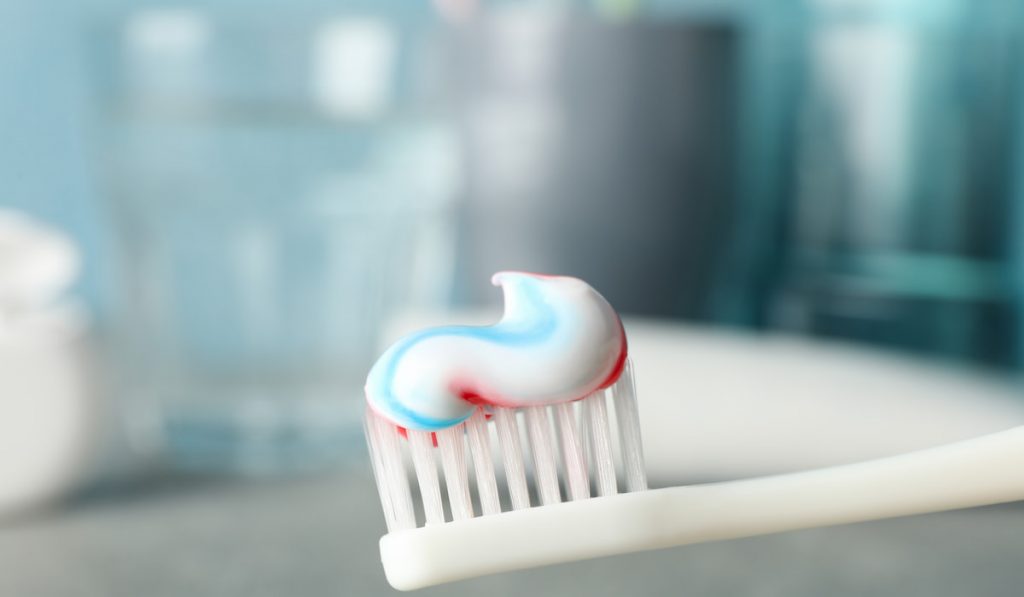
How to Use Toothpaste to Clean Matte or Satin Silver in a Pinch
Before we get to cleaning silver jewels with toothpaste, you should remember that although toothpaste will clean these types of silver, it could damage your pieces as well. Toothpaste has abrasive particles that are good for polishing away tarnish but can also scratch softer metals like silver.
To be precise, the finish of matte and satin silver may not be damaged by toothpaste, and it may even remove some dirt and tarnish to make it shine better. However, the metal itself may be scratched depending on how much force is used in cleaning.
Other silver pieces such as highly-polished silver, sterling silver, or silver-plated items should not be cleaned with toothpaste.
The finishes on these types of silver are too fragile, and any silver plating may be abraded off by the gritty toothpaste.
Instead, the best way to clean them is by employing a silver polishing cloth.
In addition, antique pieces and those with an intentional patina or paint cannot be cleaned with toothpaste. It would most certainly remove and destroy the uniqueness and beauty of the piece. The only way to clean these specialty items is to bring them to a jeweler to be professionally cleaned.
Now that you know more about silver jewelry, how can you safely use toothpaste to clean it in a pinch?
- Make sure the toothpaste is solid-colored with no additional agents – Additives like tartar control, baking soda, and whitening agents are too abrasive and can cause serious scratches to your silver. Similarly, you will need to avoid gel toothpaste because it may not abrasive enough to clean off the tarnish.
- Apply a little water to the silver – Water will soften the toothpaste, as it does in your mouth, and make it easier to work with. Just take care not to drop the item down the drain. Working over a bowl or towel may be safer.
- Use only a tiny amount of toothpaste – You can apply the toothpaste gently with your finger, or more precisely with a cotton swab.
- Gently rub the toothpaste around with a damp tissue or cotton swab – Bigger jewelry pieces such as bracelets may require tissues or damp paper towels, while smaller pieces like earrings and rings may be better served by cotton swabs. Necklaces can be soaked in a solution of diluted toothpaste and water and then folded into damp paper towels for rubbing.
Either way, regardless of what you are cleaning, a gentle touch is always key to avoid unintentional scratching of the silver.
You may notice the tissues, paper towels, or q-tips getting dark as you rub the silver. That is the tarnish being rubbed off the silver piece by the combination of the toothpaste and the cleaning action.
However, deeper tarnishes may not be removed by gentle toothpaste cleaning. You can try allowing the piece to sit with the toothpaste solution on it for about 2 – 3 minutes and then scrubbing again, but the best action would be to have a jeweler perform a professional clean on it.
- Use a soft-bristled toothbrush to clean out grooves and intricate designs – Intricate designs, patterns, and settings can collect dirt and tarnish in their tiny crevices. Sometimes a very soft toothbrush can help pull these impurities out and restore a bit of shine. Look for a baby toothbrush or adult one labelled ‘soft.’
Remember to only use that brush for cleaning jewelry afterward.
- Wipe the silver with a clean paper towel, or other soft cloth – Once you finish rubbing the toothpaste around, gently wipe the piece clean. You will notice the tarnish disappearing and the silver brightening, often leaving a dark residue on the wiping piece.
- Rinse the jewelry with warm water – After seeing some results, you need to rinse the piece thoroughly with warm water to wash the toothpaste residue off, most preferably in a bowl. You can also use warm running water in the sink, although take care not to lose it down the drain.
- Gently pat the silver with a soft cloth and let it air-dry. Microfiber cloths or scraps work well here to absorb any remaining surface water. Once that is done, place the silver on a clean soft towel, and allow it to air-dry before wearing or storing it. Necklaces and braclets with links can retain water droplets in the places where the metals touch, which will form the basis of more tarnish. Air drying can help reduce this.
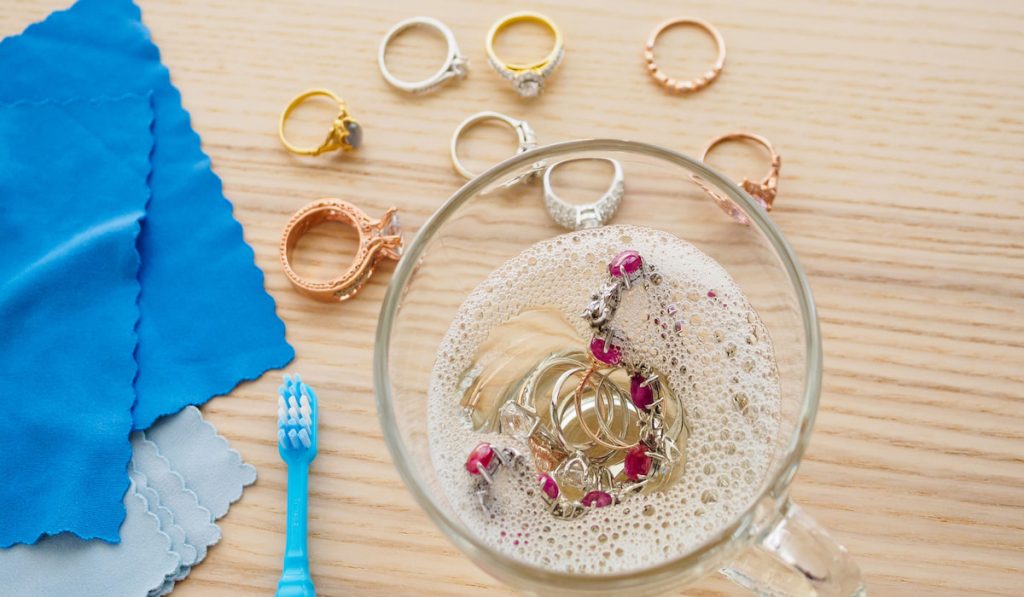
How Would a Professional Clean Jewelry?
Jewelers employ different methods of cleaning jewelry, depending on the materials and size of the piece.
Most commonly, they may use polishes and polishing cloths specifically designed for the precious metals and stones involved.
Jewelers may also put your pieces in an ultrasonic device that dislodges impurities in tiny crevices. Tarnished items are often bathed in steam under their watchful eye until the tarnish is removed.
It is recommended to have your precious metals and jewels professionally cleaned on an annual basis, especially if you wear them often. This will see to it that the hard-to-reach grit is removed, helping to maintain the jewel, and prevent the hard set tarnish from ruining your jewelry.
5 Tips for Keeping Tarnish Away
- Store your jewelry in a cool, dry place – Since humidity stimulates the tarnishing process, storing your jewels in places with no humidity is best. Jewelry boxes with sealed lids and lined with soft materials work well. For earrings and chains, tarnish-proof velvet or satin bags are the best. Cloths of muslin or velvet can be wrapped around bracelets and brooches. To keep moisture from accumulating in your storage areas, use anti-dessicant packages like silica gel or activated charcoal packs.
- Always put on your jewelry last – To prevent moist contact with your jewelry, put on your lotions, make-up, perfumes, and hair products first and let them dry before touching your jewelry. These products contain substances that can speed up or begin the tarnishing process.
- Avoid wearing jewelry where it can get wet – Such instances include when cleaning, swimming, bathing, and exercising. Moisture increases the chances of tarnishing and dirt accumulating on your jewelry. In addition, chemicals in cleaning products and tap water can be damaging.
- Clean your jewelry before storage – When worn, jewelry comes in contact with sweat, lotions, and other solutions that could cause tarnishing. Therefore, you should wipe your pieces down before storing them in your jewelry boxes.
- Separate your jewelry – It’s a good idea to keep your jewelry pieces as separate as possible. This prevents them from rubbing on one another and scratching or chipping. Most jewelry boxes have separators and lines surfaces to keep items in place. Do your best to not lay pieces on one another.
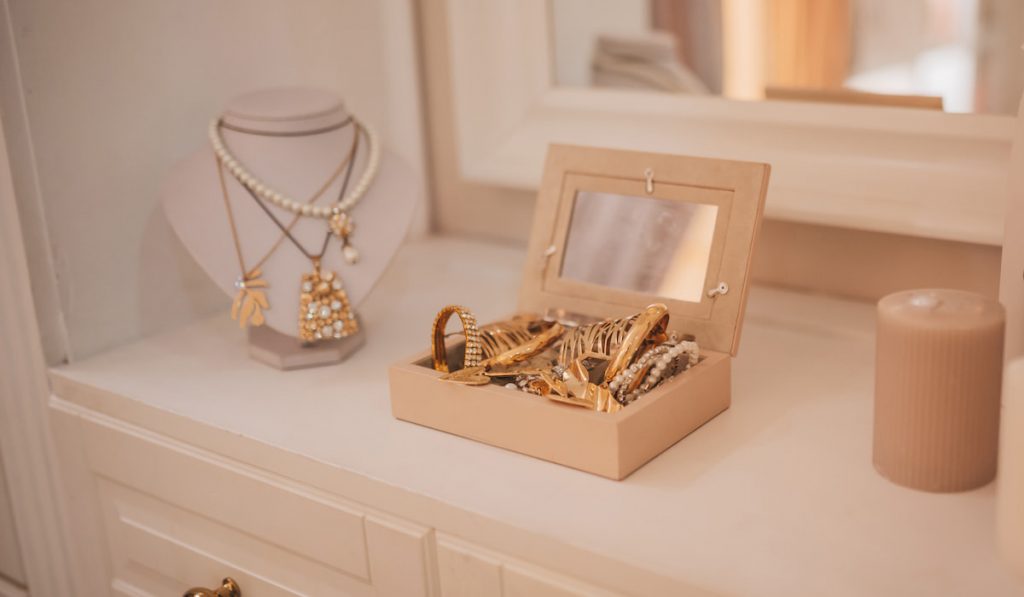
Conclusion
Toothpaste is not a good cleaning option for jewelry for the sole reason of being harder than most metals and gemstones, and it could leave scratches or ruin the luster. However, toothpaste is known to be able to clean some silver jewelry.
With the outlined steps, cleaning off any light tarnish on your matte or satin silver jewelry is possible in a pinch. Of course, the best course of action is to have a professional maintain your valuables to keep them vibrant and beautiful.
Resources:
- https://www.connoisseursuk.com/toothpaste-why-you-shouldnt-use-it-to-clean-your-jewellery
- https://www.wikihow.com/Use-Toothpaste-to-Clean-Silver-Jewelry
- https://www.silverspringjewelers.com/blog/can-i-clean-my-diamond-ring-with-toothpaste
- https://www.americangemsociety.org/5-dos-and-donts-of-spring-cleaning-your-jewelry
- https://www.daysjewelers.com/blog/jewelry-services/4-myths-how-to-clean-your-jewelry
- https://findanyanswer.com/is-toothpaste-bad-for-cleaning-jewelry
- https://swirlster.ndtv.com/work-money/5-essential-tips-to-store-your-precious-silver-jewellery

